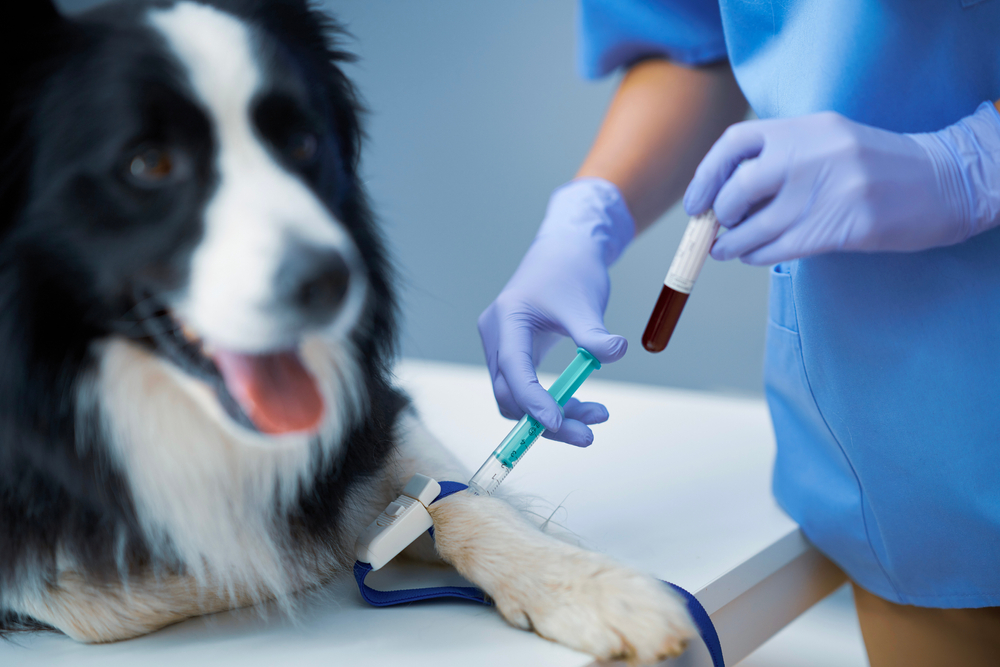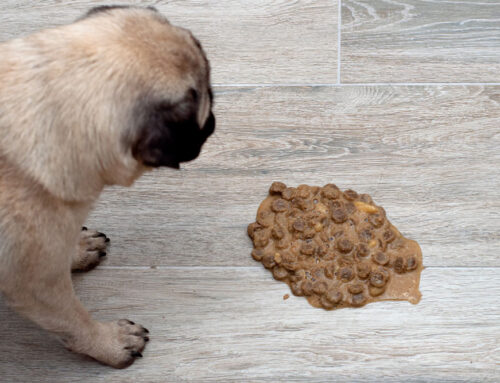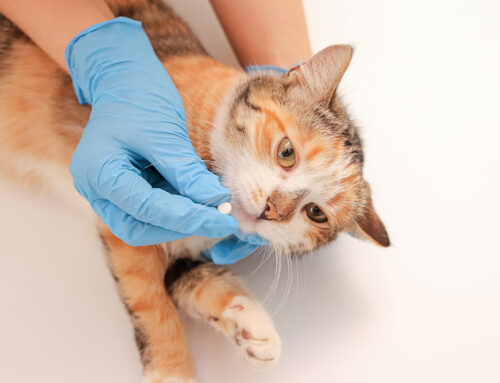Pets need blood work for various reasons, including routine wellness screenings, before undergoing general anesthesia, and when they are feeling unwell. These results can be confusing if you don’t understand them. Our team at WesVet Animal Hospital wants to provide information about some common tests your pet may need, and to explain how to interpret the results.
#1: Your pet may need a complete blood count
This common test provides information about your pet’s immune system, hydration status, and clotting ability. A complete blood count (CBC) also can reveal if your pet is suffering from an infection or anemia. Three main parameters are assessed.
- Red blood cells (RBC) — Increases in RBC, hematocrit (HCT), and hemoglobin (HGB) can indicate dehydration or a disease that is causing increased RBC production. A decrease in these values can indicate anemia and a decreased ability of the blood to carry oxygen. Other parameters include:
- Mean cell volume (MCV) — Increases indicate the presence of larger than normal cells, which may be an early response to anemia. Decreases may indicate chronic blood loss, or an iron deficiency.
- Mean cell hemoglobin concentration (MCHC) — Increases can indicate RBCs are breaking down, and decreases can indicate anemia or iron deficiency.
- Reticulocytes (RETIC) — Increases indicate regenerative anemia, and decreases indicate nonregenerative anemia.
- White blood cells (WBC)— Increases in WBCs may be caused by inflammation, stress, excitement, or leukemia. Decreases may be caused by overwhelming inflammation and bone marrow failure. Specific cell types include:
- Neutrophils — These inflammatory cells are associated with disease processes.
- Lymphocytes — These immune cells are highly responsive to stress, and may increase during chronic infection.
- Monocytes — These inflammatory cells are associated with tissue repair.
- Eosinophils — These inflammatory cells are associated with parasitic disease, hypersensitivity reactions, and allergies.
- Platelets (PLT) — Increased PLTs indicate a hypercoagulable state. Decreased production can be seen in bone marrow failure cases, increased consumption caused by coagulation or inflammation, and destruction in the blood caused by infections or immune-mediated disorders.
#2: Your pet may need a blood chemistry panel
A blood chemistry panel evaluates several pet health factors, including their organ function, electrolytes, and hormone levels. Areas evaluated include:
- Kidney — Impaired kidney function is assessed using several parameters:
- Blood urea nitrogen (BUN) — Increases can indicate decreased kidney function, dehydration, heart disease, and urinary obstruction. Decreases can indicate overhydration.
- Creatinine (CREA) — Abnormalities are similar to BUN.
- Calcium (Ca) — Increases can indicate kidney disease, cancer, and certain toxicities. Decreases can indicate parathyroid disease.
- Phosphorus (PHOS) — Increases can indicate kidney disease, and decreases can indicate decreased intake.
- Liver — Increases in alanine aminotransferase (ALT) and gamma glutamyl transferase (GGT) indicate liver disease. Other parameters include:
- Alkaline phosphatase (ALKP) — Increases can indicate liver problems, Cushing’s disease, and bone growth or remodeling.
- Aspartate aminotransferase (AST) — Increases indicate liver or muscle damage.
- Total bilirubin (TBIL) — Increases can indicate liver disease, and certain types of anemia.
- Pancreas — Increases in amylase (AMYL) and lipase (LIPA) can indicate pancreatitis, kidney disease, or gastrointestinal disease.
- Protein profile — Total protein increases can indicate dehydration or an inflammatory condition, and decreases can indicate liver issues, blood loss, and kidney impairment. Other parameters include:
- Albumin (ALB) — Increases can indicate dehydration, and decreases can indicate liver problems, blood loss, kidney disease, and gastrointestinal issues.
- Globulin (GLOB) — Increases can indicate inflammation and chronic infection, and decreases can indicate blood loss, gastrointestinal problems, and immune deficiencies.
- Electrolytes — Increases in sodium (Na), potassium (K), and chloride (Cl) can indicate dehydration, and decreases can be seen with loss after diarrhea and vomiting.
- Miscellaneous — Other important values to assess your pet’s health include:
- Glucose (GLU) — Increases can indicate diabetes mellitus, and decreases can indicate liver or pancreatic disease.
- Creatinine kinase (CK) — Increases indicate muscle damage.
- Cholesterol (CHOL) — Increases can indicate Cushing’s disease, diabetes mellitus, hypothyroidism, pancreatitis, and certain kidney problems. Decreases can occur with liver damage and intestinal disease.
- Cortisol — Increases can indicate Cushing’s disease, and decreases can indicate Addison’s disease.
#3: Your pet may need a heartworm test
Your pet should be tested annually for heartworm disease. Pets on year-round heartworm preventives continue to require annual testing, to ensure the medication is working, since a missed or late treatment can lead to infection. Two different tests are commonly used.
- Antigen tests — Antigen testing is typically used in healthy dogs, to detect circulating heartworm antigen from adult female worms. These tests can’t detect immature worms or male-only infections.
- Antibody tests — Antibody tests are typically used in cats, ferrets, and in dogs suspected of having heartworm infection. These tests detect exposure to heartworm larvae.
#4: Your pet may need a thyroid panel

Senior pets are at increased risk for developing thyroid conditions, such as hyperthyroidism or hypothyroidism. To test for these diseases, your pet may need a thyroid panel, which includes:
- T4 and T3 — Total T4 or thyroxine measurement is a useful screening test for hyperthyroidism, typically seen in cats, and hypothyroidism, more commonly seen in dogs. Total T3 or triiodothyronine is also usually elevated or high-normal in hyperthyroid cats.
- Free T4 — Free T4 is the non-protein bound thyroxine, and this test can help differentiate ambiguous cases.
- TSH baseline — Thyroid stimulating hormone tends to be high in hypothyroid dogs and low in hyperthyroid cats. This test should be used in conjunction with other thyroid tests for diagnosis.
Blood work is a valuable tool to help our veterinary professionals diagnose health issues in your pet, and this information will help you understand their results. If your pet hasn’t had routine screening blood work in the last while, contact our team at WesVet Animal Hospital, so we can help ensure they stay happy and healthy.







Leave A Comment